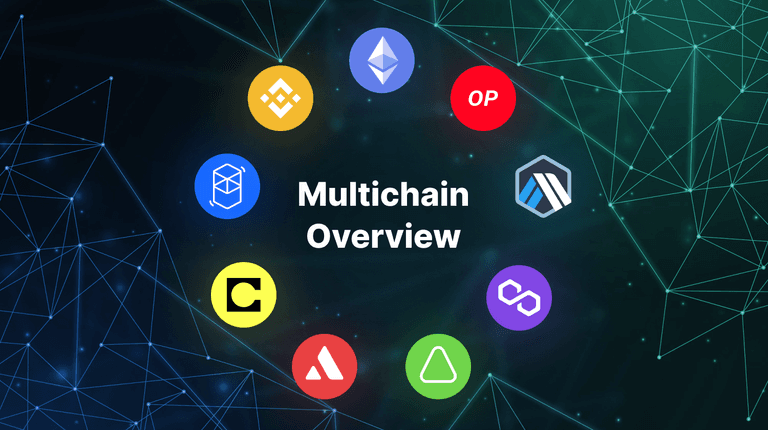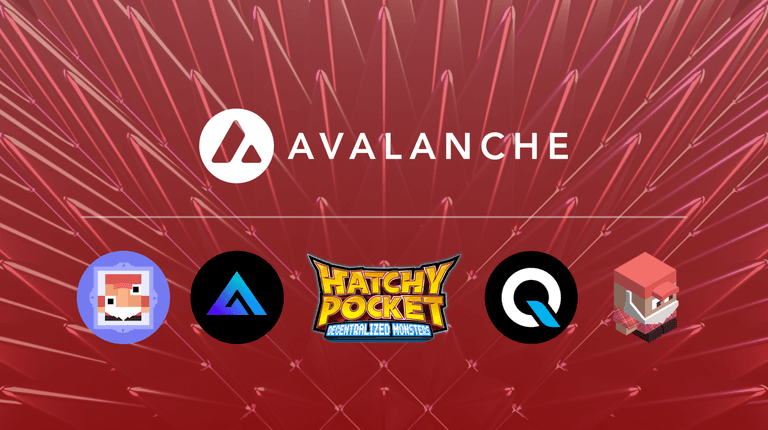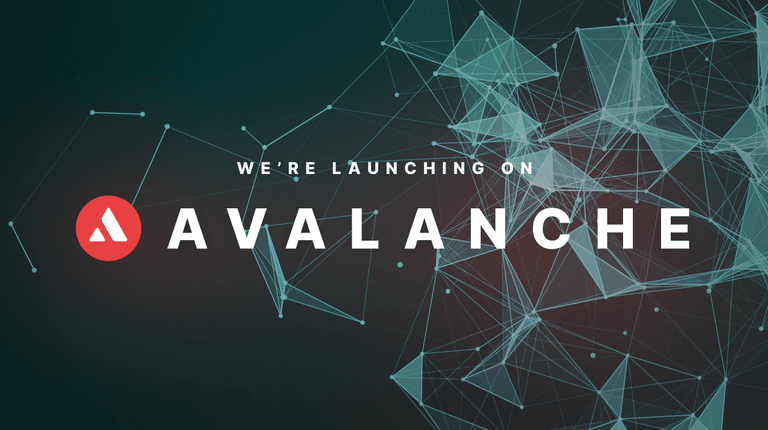Avalanche
Explore the tokens of Avalanche – the high-performance, open-source EVM blockchain platform that offers unique subnets and a smart contract environment.
All You Need to Know About Avalanche
Avalanche is a decentralized platform that enables the development of custom blockchain networks, digital assets, and decentralized applications (dApps). Avalanche is built to offer high scalability, low transaction fees, and fast confirmation times, with the goal of facilitating the development of decentralized finance (DeFi) applications, enterprise blockchain solutions, and other use cases that require high-performance blockchain networks.
History and Background
Avalanche was founded in 2018 by Emin Gün Sirer, Kevin Sekniqi, and others. The founders envisioned a blockchain platform that could rival traditional financial systems in terms of speed and efficiency.
Avalanche raised $42 million in a public sale of its AVAX token in July 2020 and launched its mainnet in September 2020. Since then, Avalanche has gained traction as a scalable and interoperable blockchain platform, attracting projects and users across various industries. The platform has continued to develop and grow, with new partnerships, collaborations, and innovations constantly emerging.
How Avalanche Works?
Avalanche is a decentralized blockchain network that utilizes a novel consensus mechanism called the Snow Consensus protocol. The Avalanche network operates as a layer-1 protocol that enables the creation of custom subnets, or sub-chains, that can operate independently or interoperably with other subnets.
Subnets
One of Avalanche's main features is the ability to create custom subnets. These subnets can be tailored to specific use cases and can have their own set of rules and parameters. The network consists of three types of subnets, each of which is optimized for a specific purpose.
- X-Chain (Exchange): Designed for the trading of digital assets, it uses a custom consensus protocol called the "Avalanche-X" consensus. The X Subnet provides fast and secure transactions with sub-second finality.
- P-Chain (Platform): Built for launching and customizing blockchains, it allows developers to create and manage their own subnets with their own consensus rules, virtual machines, and governance structures.
- C-Chain (Contract): Optimized for the execution of smart contracts, it supports the Ethereum Virtual Machine (EVM) and the Solidity programming language. The C Subnet uses the Avalanche-EVM consensus protocol, which allows developers to create decentralized applications (dApps) with high performance and low transaction costs.
As a substrate for the main subnets serves the Avalanche Primary network. This substrate network contains validators from all subchains staking at least 2000 AVAX. Validators from the Primary network validate transactions from all subchains.
Consensus engine
Avalanche has developed its original consensus engine called either Snow or simply Avalanche consensus engine. It is built to ensure security, fast transactions, and resilience against 51% attacks.
The engine uses a modified PoS (Proof of Stake) consensus model with implemented DAG (Directed Acyclic Graph) structure. Users participating in network operation are called validators. These validators confirm transactions, resolve disputes in the network, and are later rewarded by a staking yield according to the amount of their staked assets. Other users with less staked assets may delegate (support) certain validators and get a portion of their yield.
For more useful information on Consensus algorithms, refer to our post in the dictionary section.
Consensus in the network is reached by validators asking a small, random subset of other validators whether they think a specific transaction is legitimate. Validators from this subset further ask more random subsets for their opinion.
This process is repeated until all the validators in the network agree on the same result. The DAG structure enables the Avalanche consensus engine to validate transactions in parallel, as opposed to the linear validation that occurs in traditional blockchain structures.
The AVAX Token
AVAX is the native token of the Avalanche network and is used to pay transaction fees and governance. It was first issued in September 2020, and since then has become an integral part of the Avalanche ecosystem.
Utility
AVAX has several use cases within the Avalanche ecosystem. It is used to pay transaction fees on the network, which are relatively low compared to other blockchain networks. In addition, AVAX holders have voting rights and can participate in the governance of the network. The governance system allows for the proposal and voting on upgrades to the network, as well as the allocation of resources for future development.
Furthermore, AVAX is used as collateral to secure loans on the Avalanche network, and can also be staked to earn rewards through the network's staking mechanism. Staking provides additional incentives for AVAX holders to participate in the network, which contributes to its security and decentralization.
Tokenomics
AVAX has a fixed supply of 720 million, half of which was minted upon the generation of the genesis block. New tokens enter circulation as a staking reward for validators to provide incentives for honest behavior.
The token has a deflationary monetary policy, where the entire transaction fee paid in AVAX is burned. This burning mechanism gradually reduces the total supply and stabilizes demand, eventually leading to an increased price per AVAX. There are different types of transactions, the more complex ones, such as creating new subchains, result in higher transaction fees. Common transactions are otherwise very cheap, usually a fraction of a cent.
The initial distribution of AVAX was done through a public sale and a private sale. The private sale was restricted to accredited investors, and the public sale was conducted through a Dutch auction, where the price of the token was gradually reduced until all the tokens were sold. A portion of the tokens was also allocated to the Avalanche Foundation, the development team, and early backers.
FAQs
Is Avalanche and Ethereum killer?
Avalanche is sometimes spoken about as an Ethereum killer. Like various other alternative projects, Avalanche offers experimental technologies, which are in some aspects more advanced than Ethereum. However it is important to state that Ethereum has a strong technical foundation and battle tested code. That makes it a safer investment. Projects like Avalanche have a big upside, as well as downside potential.
Is Avalanche crypto a good investment?
Avalanche is a new and experimental platform, which offers a lot of room for growth and adoption. However, it is important to consider the pace in which these technologies are developed could be potentially dangerous. Experimental platforms are a high-risk high-reward investment and it is very important to understand how they work and what are they for before investing. Always conduct your own research on the risks of a specific project.
Which is better Solana or Avalanche?
It really depends on what you're looking for. If you're interested in a blockchain that can handle high volumes of transactions and has a strong focus on performance, then Solana might be a better choice for you. If you're interested in a highly customizable blockchain platform that offers interoperability and fast finality, then Avalanche might be a better choice.
Where to buy Avalanche crypto?
There are two main ways to purchase AVAX tokens, the native currency of the Avalanche network. One way would be to create an account on a centralized exchange, such as Binance or Coinbase, purchase the token for fiat, and send it to your Ethereum wallet. The second way involves decentralized exchanges (DEXs). You can swap another token for MATIC conveniently in the CoinBrain Trade section, which automatically finds you the best price across all of the DEXs.
Who owns Avalanche coin?
Avalanche (AVAX) is a decentralized cryptocurrency, which means it is not owned by any individual or organization. Instead, it is held and maintained by its users, who help to secure and validate the blockchain network.



